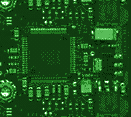|
|
|
|
|
|
Socks Toxicity And Drugs In RA (formerly Ivil site) Sock's Rhumatoid Arthritis Page1 (formerly Ivil site)
RA is one of the most delibitating autoimmune disease in the over 100 different types of rheumatic diseases
in the arthritis family-group of musculoskeletal diseases. Rheumatoid arthritis is one of the most misrepresented
and misquoted rheumatic disease.
There are mild,moderate,severe and RA that charachterizes stiffness as the main feature. Each type affects
patients in different forms and effects.
That also applies to therapy. One medication will be efficacious for one and do nothing for another patient.
Educate yourself ! Get control of your disease ! Avoid "hear- say" advice. Distinguish truth from fiction. Avoid advice
about Aunt Martha's arthritis and how Cousin Jane coped with her condition.
RA affects 1% of the population in the U.S.A.,this low prevelance means that many physicians and health care workers
are unfamiliar with the difference in effects and types of rheumatoid arthritis that exists.
RA is a systemic disease meaning that if your left side of the body e.g., hand/knee is affected then it is more then
likely that your right hand/knee will be also affected.
Disease symptoms can occur suddenly or develop gradually. Full symptoms may not occur at onset. Remission is rare
but when it occurs it is usually,more associated with the milder form of disease.
There are periods when the disease is less active and episodes of "flare ups" where disease activity is more pronounced.
There are many articles written about rheumatoid arthritis but be aware of the accuracy of information provided. Search
engines rely on "keywords". Many keywords have mutiple meanings. There are over 100 different types of rheumatic
diseases or "Arthritis".
Advice is cheap and abundant but the wrong advice can be costly. Do not always believe what you hear!
There are many family physicians experienced in the management and treatment of rheumatoid arthritis but there are
also many who are not and this relates more to medications with some side effects.
There are nurses with advanced training in the management of rheumatic diseases but there are many who have had little
or no experience and training with the different types of rheumatic diseases.
There are pain syndromes like fibromyalgia (FM)-chronic fatigue syndrome (CFS).
Most people do not associate gout with arthritis or realize tuberculosis is associated with infectious arthritis.
Lupus has many different types and some forms of the disease can be life-threatening while some types can last for a short
period and quickly go into remission, with no lasting effect,some people don't even have to take medications.
Others think the only arthritis is degenerative osteoarthritis. "Live long enough and most people will have some form of
arthritis."
Anti-inflammatory drugs (NSAIDs) help to ease the symptoms of the disease but do not stop the on-going damage to bone and
tissue. Corticosteriods are a type of steriodal drug that is used in RA therapy to serve as a "bridge" before the effects of the
DMARDs come into play. Steriods have serious side effects such as osteoporosis for long term use. The physician will use the lowest dose possible
and yet maintain effectiveness. Not all drugs will work equally all for all patients therefore the physician and patient must be aware when a drug is not
working and another drug or doseage must be altered/changed. Each drug has an estimated time-period for efficacy. Undesired
side effects may result of medications used in therapy. The typical case of rheumatoid arthritis begins insidiously, with the slow development of signs and symptoms over weeks
to months. Often the patient first notices stiffness in one or more joints, usually accompanied by pain on movement and by tenderness
in the joint. The number of joints involved is highly variable, but almost always the process is eventually polyarticular, involving
five or more joints Rheumatoid arthritis is an additive polyarthritis, with the sequential addition of involved joints, in contrast to the
migratory or evanescent arthritis of systemic lupus erythematosus or the episodic arthritis of gout. Occasionally, patients experience an explosive polyarticular onset occurring over 24 to 48 hours. The joints involved most often are the proximal interphalangeal (PIP) and metacarpophalangeal (MCP) joints of the hands,
the wrists (particularly at the ulnar-styloid articulation), shoulders, elbows, knees, ankles, and metatarsophalangeal (MTP)
joints. The distal interphalangeal (DIP) joints are generally spared. The spine except the atlanto-axial articulation in late disease
is never affected. Morning stiffness, persisting more than one hour but often lasting several hours, may be a feature of any inflammatory
arthritis but is especially characteristic of rheumatoid arthritis. Its duration is a useful gauge of the inflammatory activity
of the disease. Similar stiffness can occur after long periods of sitting or inactivity (gel phenomenon). In contrast, patients with degenerative
arthritis complain of stiffness lasting but a few minutes. Nonspecific systemic symptoms primarily fatigue, malaise, and depression, may commonly precede other symptoms of the disease
by weeks to months. Patients complain of severe fatigue 4 to 6 hours after wakening. Fever occasionally occurs and is almost always low grade
(37° to 38°C; 99° to 100°F). A higher fever suggests another illness, and infectious causes must be considered. It is typical of patients with rheumatoid arthritis that their symptoms wax and wane often making diagnosis and treatment
decisions difficult. A typical presentations include intermittent joint inflammation that can be confused with gout or pseudogout, proximal
muscle pain and tenderness mimicking polymyalgia rheumatica or diffuse musculoskeletal pain seen in fibromyalgia. Symmetric joint swelling, although not invariable, is characteristic of rheumatoid arthritis. Careful palpation of the joints can help to distinguish the swelling of joint inflammation from the bony enlargement seen
in osteoarthritis. Fusiform swelling of the PIP joints of the hands is a common early finding. MCP, wrists, elbows, knees, ankles and MTP
are other joints commonly affected where swelling is easily detected. In contrast to gout or septic arthritis, redness of affected joints is not a prominent feature of rheumatoid arthritis.
Pain on passive motion is the most sensitive test for joint inflammation. Occasionally inflamed joints will feel warm to
the touch. Inflammation, structural deformity, or both may limit the range of motion of the joint. To institute proper therapy, it is important to determine which of these processes is the major factor limiting joint function.
Permanent deformity is an unwanted result of the inflammatory process. Persistent tenosynovitis and synovitis leads to
the formation of synovial cysts and to displaced or ruptured tendons. Extensor tendon rupture at the dorsum of the hand is
a common and disabling problem. Although the joints are almost always the principal focus of the rheumatoid arthritis, other organ systems may also be
involved. Extra-articular manifestations of rheumatoid arthritis occur most often in seropositive patients with more severe joint
disease. Interestingly, extra-articular manifestations can occur in later stages of the disease when there is little active
synovitis ("burnt-out" disease). In contrast to the predilection of rheumatoid arthritis for women, extra-articular manifestations
of the disease are more common in men. Rheumatoid Nodules: The subcutaneous nodule is the most characteristic extra-articular lesion of the disease. Nodules occur
in 20 to 30% of cases, almost exclusively in seropositive patients. They are located most commonly on the extensor surfaces
of the arms and elbows but are also prone to develop at pressure points on the feet and knees. Rarely, nodules may arise in
visceral organs, such as the lungs, the heart, or the sclera of the eye. Cardiopulmonary Disease: There are several pulmonary manifestations of rheumatoid arthritis, including pleurisy with or
without effusion, intrapulmonary nodules, rheumatoid pneumoconiosis (Caplan's syndrome), diffuse interstitial fibrosis, and
rarely, bronchiolitis obliterans pneumothorax. On pulmonary function testing, there commonly is a restrictive ventilatory
defect with reduced lung volumes and a decreased diffusing capacity for carbon monoxide. Although mostly asymptomatic, of
greatest concern is distinguishing these manifestations from infection and tumor. Pericarditis is the most common cardiac manifestation.
Ocular Disease: Keratoconjunctivitis of Sjogren's syndrome is the most common ocular manifestation of rheumatoid arthritis. Sicca (dry
eyes) is a common complaint. Episcleritis occurs occasionally and is manifested by mild pain and intense redness of the affected
eye. Scleritis and corneal ulcerations are rare but more serious problems. Neurologic Disease; The most common neurologic manifestation of rheumatoid arthritis is a mild, primarily sensory peripheral
neuropathy, usually more marked in the lower extremities. Entrapment neuropathies (e.g., carpal tunnel syndrome and tarsal tunnel syndrome) sometimes occur in patients with rheumatoid
arthritis because of compression of a peripheral nerve by inflamed edematous tissue. Cervical myelopathy secondary to atlantoaxial
subluxation is an uncommon but particularly worrisome complication potentially causing permanent, even fatal neurologic damage.
Felty's Syndrome: Felty's syndrome is nowadays a rare complication of rheumatoid arthritis and is characterized by splenomegaly, and leukopenia
— predominantly granulocytopenia. Recurrent bacterial infections and chronic refractory leg ulcers are the major complications.
Rheumatoid Vasculitis; The most common clinical manifestations of vasculitis are small digital infarcts along the nailbeds. The abrupt onset of
an ischemic mononeuropathy (mononeuritis multiplex) or progressive scleritis is typical of rheumatoid vasculitis. The syndrome
ordinarily emerges after years of seropositive, persistently active rheumatoid arthritis; however, vasculitis may occur when
joints are inactive.
Sjogren's Syndrome: Approximately 10 to 15% of patients with rheumatoid arthritis, mostly women develop Sjogren's syndrome, a chronic inflammatory
disorder characterized by lymphocytic infiltration of lacrimal and salivary glands. This leads to impaired secretion of saliva
and tears and results in the sicca complex: dry mouth (xerostomia) and dry eyes (keratoconjunctivitis sicca).
Patients with Sjogren's syndrome have a variable expression of disease in other exocrine glands. This is manifested clinically
as dry skin, decreased perspiration, dry vaginal membranes, or a nonproductive cough. Commonly, there is also a polyclonal
lymphoproliferative reaction characterized by lymphadenopathy and splenomegaly. This can mimic and rarely transform into a
malignant lymphoma.
Clinical Course: The course of rheumatoid arthritis cannot be predicted in a given patient. Several patterns of activity have been described:
I)a spontaneous remission particularly in the seronegative patient within the first 6 months of symptoms (less than 10%)
recurrent explosive attacks followed by periods of quiescence most commonly in the early phases. II)the usual pattern of persistent and progressive disease activity that waxes and wanes in intensity. Disability is higher among patients with rheumatoid arthritis with 60% being unable to work 10 years after the onset of
their disease. Recent studies have demonstrated an increased mortality in rheumatoid patients. Median life expectancy was shortened an average of 7 years for men and 3 years for women compared to control populations.
In more than 5000 patients with rheumatoid arthritis from four centers, the mortality rate was two times greater than in
the control population. Patients at higher risk for shortened survival are those with systemic extra-articular involvement, low functional capacity,
low socioeconomic status, low education, and prednisone use. The progress in Research and Development in drugs and knowledge of the disease is progressing at a speed unforseen in the
past. Biotechnology has created medications that has helped rheumatoid arthritis patients who previously could not be helped.
Cost factor and provincial health plans are the chief drawbacks from having these new medications available to all patients
in need.
Major Warning Signs:
Factors related to RA:
The "Big Picture" has to be analyzed and this involves patient input. Once the disease is under control,pain will be minimal. Some researchers have suggested a virus triggers the disease but there is no scientific evidence to suggest the validity
of this view. It is currently thought that genetrics may be a contributing factor in the presence of RA in a patient. Don't waste your time,future health or money on "cures" see a rheumatologist to treat your disease.
Socks RA Index Page-Angelfire.com Gold ttherapy is outdated currently. All my RA Geocities sites will be unavailable.
|
|

